Forgot your password?
Enter your email address and we'll send you a link to set your password

Introduction
Prizes
Winners
Rules
Link – https://drive.google.com/drive/folders/1rNqmWPxvM2Kn4Y2v71UGOyCse_9yEGAQ?usp=sharing
IPLAY Valorant Rules
Background and purpose
These rules apply to and are binding on:
(1) the individual (natural person), entity and/or group who registered a team to participate in
an iPlay event
(2) to each Team’s players, managers, coaches, owners and other representatives. A Team’s
players, managers, coaches, Owners and other representatives are referred to as the “Team Mem-
bers.”
These rules form a contract between a Team Member and the Tournament Operator.
Each Team Member must read, understand, and agree to these rules before participat-
ing in any iPlay event.
2
2
Roster rules
ALL PLAYERS MUST READ THE RULES SPECIFIED IN THIS RULEBOOK.
2.1
Roster Lock
Teams participating in an iPlay event may not add or drop players from the beginning of their
first match in the event up until the end of their run in the event.
2.1.1
Interregional Movement Policy Roster Restrictions
Teams must have at least three of the players on its Starting Roster be Residents of Sri Lanka.
2.1.2
Coaches
Teams may have one coach that is designated as the main coach that is allowed to commu-
nicate with the Team’s Players during the Agent and Map selection process for each Match,
timeouts, half-times, in between regulation and overtime, and in between Maps (if applicable).
If a Team has a coach designated as the main coach, then that main coach may be present for
every Match in which the Team participates. For live, in-person tournaments (“LAN Events”),
the Team’s designated main coach may be on site throughout each such Match. For online tour-
naments (“Online Events”), the Team’s designated main coach may be connected to the voice
communication system in the lobby and will only be allowed to talk to players during the Agent
and Map selection process for each Match, timeouts, half-times, in between regulation and over-
time, and in between Maps (if applicable). The Team’s designated main coach is only permitted
to be in the Match Area during Agent and Map selection, Timeouts, Half-Times, in between reg-
ulation and overtime, and in between Maps. For the purposes of online competition, any room
in which the player competes will be considered part of the Match Area. At the Tournament
Operator’s sole discretion, up to two (2) other coaches and/or Team personnel may be provided
with a means to communicate with the main coach during the Match. The other coaches and/or
Team personnel may only communicate with the main coach using the means provided by the
Tournament Operator. The other coaches and/or Team personnel are not permitted to be in the
Match Area, and may not communicate with the Players during a Match unless authorized by
the Tournament Operator.
3
3
Match Process
3.1
Changes to schedule
Tournament Officials may, at their sole discretion, re-order the schedule of Matches within a
given day and/or change the date of a Match to a different date or otherwise modify the schedule
of Matches. In the event that the Tournament Officials modify a Match schedule, they will notify
all Teams as soon as possible.
3.2
Arrival at venue
Members of a Team’s Active Roster who are participating in a LAN Event held as part of
a Challengers event must arrive at the venue no later than the time specified by Tournament
Officials. For any Online Matches Players will be expected to be ready to join the Match Lobby
no later than the time specified by Tournament Officials. Sanctions for tardiness may be assessed
at the discretion of Tournament Officials.
3.3
Role of Referees
3.3.1
Head Referee
The “Head Referee” is a Tournament Official who is responsible for the judgments on ev-
ery Match-related issue, question and situation which occurs before, during, and immediately
following Match play. Their oversight includes, but is not limited to:
• Checking the Team’s lineup before a Match.
• Checking and monitoring player peripherals and Match Areas, if applicable.
• Announcing the beginning of the Match.
• Ordering pause/resume during play.
• Issuing sanctions and disciplinary action in response to rule violations during the Match.
• Making all Match-related determinations under these rules, including with regard to pauses
and stoppages of play.
• Confirming the end of the Match and its results.
3.3.2
Referee responsibilities
Referees are Tournament Officials who work on behalf of the Tournament Operator and are
subject to the direction, review and oversight of the Head Referee. Referees are responsible for:
4
• Admitting or denying access to the Match Areas, if applicable.
• Carrying out security protocols directed by the Head Referee and other Tournament Of-
ficials.
• Administering the player checklist and enforcing these rules, including directing players
to take or refrain from taking any action.
• Communicating with players about any issues experienced, in-game and out.
• Upon request, explaining any bug exploits.
3.3.3
Finality of judgement
All decisions regarding the interpretation of these rules, player eligibility, scheduling and
staging of the event, and penalties for misconduct, lie solely with the Head Referee, the decisions
of which are final. Head Referee decisions with respect to these rules cannot be appealed and
shall not give rise to any claim for monetary damages or any other legal or equitable remedy.
3.4
Competitive Patches
All matches will be played on the latest available patch version.
3.4.1
New Agents
New Agents will be automatically restricted for two weeks from their release on Competitive
queue.
Example: Agent A was released on February 5, so Agent A will become eligible to be used in
all Matches on February 19.
3.4.2
New Maps
New Maps will be automatically restricted for four weeks from their release on Competitive
queue.
Example: Map A was released on February 5, so Map A will become eligible to be used in all
Matches on March 5.
3.4.3
Additional Restrictions
Additional Restrictions (e.g. disabling certain weapons) may be added by the tournament
officials at any time before or during a match, if there are known bugs with any items, Agents,
skins, or abilities.
Note: Tournament Officials reserve the right to extend the amount of time a New Agent
5
or Map is restricted if the introduction of the New Agent or Map would negatively impact
competitive integrity.
3.5
Pre-Match Setup
3.5.1
Player Accounts
Players will use their own online accounts and Riot IDs during play of iPlay events. Any
case of account sharing will lead to heavy repurcussions and penalties.
3.5.2
Timelines of Match start
It is expected that players will resolve any issues with the setup process within the allotted
time and that the Match will begin at the scheduled time. Sanctions for tardiness may be assessed
at the discretion of Tournament Officials.
3.5.3
Match Lobby Creation
Other than with respect to Online Qualifier matches, all Matches that are part of an iPlay event
will be played in Match lobbies hosted by the Tournament Operator. Tournament Officials will
decide how the official Match lobby will be created. For Online Events, Tournament Officials
will notify Team Captains of official accounts that will be used to host the Match.
3.5.4
Online Matches
For Online Matches that are part of a Challengers event, Players will be expected to complete
setup and confirm readiness at a time specified by Tournament Officials prior to each match.
Players are responsible for ensuring the performance of their chosen setup, including computer
hardware and peripherals, internet connection, DDOS protection and power. Issues with this
setup are not an acceptable reason for lateness or pausing beyond a Team’s allowance.
3.5.5
Pre-Match obligations
Players will be informed of any pre-Match obligations, including, but not limited to, media
appearances, interviews, or further discussion of any Match matters.
3.6
Match Setup and Play Restrictions
3.6.1
Lobby Settings
The official Match lobby will be set to “Tournament” mode with “Overtime: Win by Two”
turned on and ”Hide Match History” turned off.
6
3.6.2
Server selection
All matches will be played in the Singapore server.
3.6.3
Start of Map selection process
Once all ten players have reported to the official Match lobby, a Referee or Tournament Of-
ficial will request confirmation that both Teams are ready for the map selection process. Once
both Teams confirm readiness, a Referee or Tournament Official will instruct the room owner
to start the map selection process. Under no circumstances may a map be played twice in one
Match unless all other available maps have been played. For the first Match of the day, the Map
Selection process will begin 30 minutes prior to the start of Map 1. For all other Matches, the
Map Selection Process will begin upon conclusion of Map 1 in the previous series.
Note: The Tournament Operator may modify the Map Selection Process prior to an event
but must provide advance notice to all participants before doing so.
3.6.4
Map pool
The map pool consists of Bind, Haven, Split, Ascent, Icebox, Breeze, and Fracture.
3.6.5
Map Selection Process for Best-of-One Matches
The better-seeded team will decide if they are either Team A or Team B. If the tournament
in question has no predetermined seeding, the “better-seeded team” for purposes of this Section
will be determined at random. When instructed in the Map Selection Process, the Team must
ban a map and cannot choose to skip the map ban. Team A starts the process and the map for
the Match will be selected according to the following procedure:
1. Team A bans 1 map
2. Team B bans 1 map
3. Team A bans 1 map
4. Team B bans 1 map
5. Team A bans 1 map
6. Team B bans 1 map
7. Map 7 is only Map remaining
8. Team A picks side
7
3.6.6
Map Selection Process for Best-of-Three Matches
The better-seeded team will decide if they are either Team A or Team B. If the tournament
in question has no predetermined seeding, the “better-seeded team” for purposes of this Section
will be determined at random. When instructed in the Map Selection Process, the Team must
ban a map and cannot choose to skip the map ban. Team A starts the process and the map for
the Match will be selected according to the following procedure:
1. Team A bans 1 map
2. Team B bans 1 map
3. Team A picks map 1
4. Team B picks side for map 1
5. Team B picks map 2
6. Team A picks side for map 2
7. Team A bans 1 map
8. Team B bans 1 map
9. Map 3 will be the leftover map
10. Team A picks side for map 3
3.6.7
Map Selection Process for Best-of-Five Matches
The better-seeded team will decide if they are either Team A or Team B. If the tournament
in question has no predetermined seeding, the “better-seeded team” for purposes of this Section
will be determined at random. When instructed in the Map Selection Process, the Team must
ban a map and cannot choose to skip the map ban. Team A starts the process and the map for
the Match will be selected according to the following procedure:
1. Team A bans 1 map
2. Team B bans 1 map
3. Team A picks map 1
4. Team B picks side for map 1
5. Team B picks map 2
6. Team A picks side for map 2
8
7. Team A picks map 3
8. Team B picks side for map 3
9. Team B picks map 4
10. Team A picks side for map 4
11. Map 5 will be the leftover map
12. Team B picks side for map 5
3.6.8
Start of Agent Selection Process.
Once Agent Select has started, Players will have 85 seconds to pick their Agent, with both
Teams picking simultaneously. If a Player picks an Agent by mistake during this phase, the
Player must notify a Tournament Official of their intended selection before the Agent Select
timer expires. In this case the Agent Select process will be restarted with the same Picks up
until the mistake occurred, after which the Player must choose their intended Agent. In the case
the Player notifies a Tournament Official after the timer has expired, the Agent Select process
will not be restarted and the Player will be required to play through
3.6.9
Match Start After Agent and Map Selection.
A Match will start immediately after the Agent/Map Selection process is complete, unless
otherwise stated by a Tournament Official. Players are not allowed to quit a Map during the
time between the completion of picks/bans and Map launch, also known as “Free Time.”
3.6.10
Controlled Match Start.
In the event of an error in Match start or a decision by Tournament Officials to separate the
pick/ban process from Match start, a Tournament Official may start the Match in a controlled
manner and all maps will be selected in accordance with the previous valid completed pick/ban
process.
3.6.11
Slow Client Load.
If a game crash, disconnect, or any other failure occurs which interrupts the loading process
and prevents a player from joining a Match upon Match start, the Match must be immediately
paused until all ten players are connected to the Match.
9
3.6.12
Restrictions on Gameplay Elements.
Restrictions may be added at any time before or during a Match, if there are known or sus-
pected bugs with any Agents, skins or maps, or for any other reason as determined at the discre-
tion of Tournament Officials.
3.6.13
Substitutions during Tournament Play.
For Matches involving more than one Map (i.e., a best-of-three or best-of-five Match), a
Team may replace their then-current Starters with Substitutes in between Maps, provided that the
Team informs the opposing Team and receives approval from the Referees of such substitution
no later than five minutes after the conclusion of the previous game. In the event that a Player
disconnects during a map and is unable to return within the allocated pause time, the Team
will be permitted to replace them with a Substitute from their Roster, if the disconnect happens
before the start of round 2. Any substitutions must result in the Team having an eligible Roster
or Starting Roster, and will be given a maximum time of 10 minutes to join the lobby, and failing
to do so will result in a penalty that may result in forfeit.
10
4
Pauses and crashes.
4.1
Timeouts(Tactical Pauses
Teams are allowed to call Timeouts of 60 seconds in duration two times per map. The 60
second clock will begin when both teams’ Coaches are connected and able to communicate with
their players. Timeouts can be called via the in-game pause system. In the event of overtime,
each team will be granted one 60 second Timeout for all of overtime. Unused timeouts from
regulation will not carry over.
4.1.1
Manual Timeout Protocol
The Tournament Official can pause the game if for some reason the player pausing does not
work.
4.2
Technical Pauses
If a player has a problem that prevents him from playing on, he must notify the Tournament
Official and request a technical pause. The player has to announce the reason before or imme-
diately after he requests the pause. Unless a Tournament Official instructs the player otherwise
any form of communication including but not limited to text and voice communication between
players and coaches is forbidden during a technical pause. The Tournament Official can pause
the game if for some reason the player pausing does not work.
4.3
Crashes
The better-seeded team will decide if they are either Team A or Team B. If the tournament
in question has no predetermined seeding, the “better-seeded team” for purposes of this Section
will be determined at random. When instructed in the Map Selection Process, the Team must
ban a map and cannot choose to skip the map ban. Team A starts the process and the map for
the Match will be selected according to the following procedure:
• If a match is interrupted for reasons beyond the control of the Players (e.g. server or
player crash), the Tournament Official will restore the round using the in-game round
restore feature, but in some scenarios may decide to replay the round or even a whole
match.
• If the issue takes place during the first minute of the round, before any damage has oc-
curred and the opponent or referee has been immediately notified, the round will be re-
stored.
11
• If the issue takes place during a round and after the damage has been made and the outcome
of the round can still be determined (e.g. a single player has dropped but others remain),
then the round will not be replayed or restored. The round will continue to be played and
will count. Special exceptions can be made if the damage dealt was ruled insignificant
e.g. accidental teammate damage dealt at the start of the round or damage dealt to the
opposing side by the team that was affected by the crash.
• If the issue takes place during the round, after damage has occurred and the outcome of
the round cannot be determined (e.g. due to server crash), the match will be restored to
the beginning of the round.
• If the issue takes place during the round, after damage has occurred and the outcome of
the round is obvious (e.g. one team is saving with 10 seconds remaining), but it cannot
be continued due to for example a server crash, then the round can be awarded.
• The matches will not be stopped and/or rounds will not be restored or replayed in cases
where it is clearly a participant’s fault (e.g. mis-buying a weapon).
12
5
Bug and Exploit Adjudication.
5.1
Types of Bugs
A bug is an error, flaw, or fault in the game that produces an incorrect, unintended, or un-
expected result. There are three classifications of Bugs – Play Through Bugs, Major Bugs, and
Exploits. Bug classification will be communicated via the Esports Bug List.
5.1.1
Play Through Bug
A bug that does not significantly alter the competitive integrity of the game. This may mean
that there are mitigation steps available or the impact has been deemed insufficient to warrant a
disable or remake.
5.1.2
Major Bug
A bug that significantly impacts a Player’s ability to compete in the game, significantly alters
game stats or gameplay mechanics, and has no reasonable mitigation steps. The determination
of impact will be at the sole discretion of Tournament Officials.
5.1.3
Exploit
A bug that has the potential to significantly alter the competitive integrity of the game and
provide an unintended competitive advantage. As a standard, regardless of impact, exploit usage
is not permitted and if found will result in a penalty.
5.2
Agent Specific Bugs
Non-limiting examples of Agent Specific Bugs are detailed in the External Bug and Exploit
List. Any use of a bug or exploit specifically listed in the External Bug and Exploit List, or
covered under a blanket prohibition will be considered a violation of these rules.
5.2.1
Cypher
All Cypher cam placements that afford an unfair competitive advantage via abusing map
textures and/or geometry to prevent the Cypher cam from being destroyed or seen are considered
banned exploits. All Cypher cam placements must result in a Cypher cam that is destructible,
that is viewable by both teams, and that does not exploit map textures and/or geometry to create
a one-way view that provides an unfair advantage. Any other uses of a Cypher cam that are
determined by a Tournament Official to provide an unfair competitive advantage will also be
considered banned exploits.
13
5.2.2
General Agent Utility Rule
All uses of agent utility that afford an unfair competitive advantage via abusing map textures
and/or geometry to prevent the agent utility from being destroyed or seen are considered banned
exploits. Agent utility cannot be used in areas that are outside of map boundaries while poten-
tially providing any useful information or advantage at any point. Areas that are within map
boundaries are defined as areas where all utility is
1. destructible as intended for that utility,
2. has the ability to be seen by both teams as intended for that utility, and
3. does not exploit map texture and/or geometry to provide an unfair competitive advantage.
A player shall not alter the utility’s intended purpose and scope of usage by abusing map textures
and/or geometry, abusing unintended interactions with other utility, unintended interactions with
weapons, or other types of unintended interactions to gain an unfair competitive advantage. Any
other uses of an agent’s utility that are determined by a Tournament Official to provide an unfair
competitive advantage will also be considered banned exploits.
SPECIAL EXCEPTIONS: KAY/O’s ZERO/POINT ability is intended to be usable outside of
map boundaries, and is a special exception regarding these rules. KAY/O’s ZERO/POINT abil-
ity is allowed to be placed outside of map boundaries, and at other locations that cause KAY/O’s
ZERO/POINT ability to be indestructible and/or unviewable by the enemy players. However,
the knife model of KAY/O’s ZERO/POINT ability cannot abuse or exploit map textures and/or
geometry to travel to unintended locations. For example, the knife model of KAY/O’s ZERO/POINT
ability may not travel through or inside map textures and/or geometry that are intended to be
solid. Teams should clear specific trajectories or end locations for KAYO’s ZERO/POINT abil-
ity with Tournament Staff prior to usage if the Team is unsure whether that usage complies with
this special exception rule.
5.3
Assessment of penalties
When assessing the appropriate penalty, Tournament Officials shall take into account the
Penalty Index (past punishments for the same or similar situation), Bug Classification, Prior
Communication, Impact, and Intent. The following questions and assessments shall be consid-
ered by Tournament Officials in each category to apply appropriate penalties.
5.3.1
Bug Classification
• Is the bug on the Esports Bug List, and how is it classified?
14
• If the bug isn’t in the Esports Bug List, is it similar enough to another that a reasonable
person would assume that the classification would be the same?
• If the bug isn’t in the Esports Bug List and isn’t similar to another known bug, Tournament
Officials should use the other criteria to help inform any action.
5.3.2
Prior Communication
• Has the Esports Bug List been shared with the team and/or player?
• Was the Esports Bug List for the patch version designated by the Tournament Officials
for the iPlay event shared within a reasonable timeframe for them to inform themselves
and make necessary adjustments?
• If the Esports Bug List hasn’t been communicated at all or in a reasonable timeframe, this
should be a mitigating factor.
5.3.3
Impact
• What impact did the bug have on the round and/or outcome of the map – e.g. Damage
dealt, info gained (vision, sound etc.), prevented opponents actions (bomb defusal/plant).
• What impact could this bug have on the perception of the sport? Could it bring the sport
into disrepute?
5.3.4
Intent
• How hard is it to use the bug accidentally? Does it require a specific set of actions that
don’t occur in the normal course of play?
• Has the Player or Team received penalties for the same bug in the past?
• Did the Player or Team discuss usage in voice comms?
• Did the Player or Team notify a referee immediately after the bug had occurred?
5.4
Types of Penalties
The following list of penalties is a non-exhaustive list. Tournament Officials may, at their
sole discretion, issue other types of penalties such as Fines or Suspensions on a case-by-case
basis.
15
5.4.1
Warnings
Tournament Officials may issue Warnings for a low impact first offense in order to prevent
widespread usage of low impact bugs. Warnings may be issued for unintended bugs that did not
give a competitive advantage, or bugs deemed small enough to not have a significant impact on
the competitive integrity of the match.
5.4.2
Round Rollback
Tournament Officials may perform a Round Rollback when a bug has had a significant im-
pact on the outcome of the round, but the intent of the Player that performed the bug cannot be
determined, or for low impact second offenses. Round Rollbacks may be used for unintended
bugs that give a competitive advantage. Tournament Officials shall evaluate the intent of the
Player that performed the bug on a case by case basis. If a Player contacts an official immedi-
ately after the unintended bug occurs, then Tournament Officials shall consider issuing a Round
Rollback. Round Rollbacks may also be issued for a major bug that impacts the integrity of the
round, but is not the fault of any Player or Coach.
5.4.3
Round Loss
Tournament Officials may issue a Round loss when an exploit has a significant impact on
the outcome of the round, and Tournament Officials have determined that the Player or Team
intended to perform the exploit. Round Losses may also be issued if a Round Rollback threshold
has been exceeded, as determined by Tournament Officials. Round losses may be applied using
the following methods:
• Roll back to the round where the exploit was used and award the Team that did not perform
the exploit the round win via elimination in round rollback settings.
• If rolling back isn’t an option, round loss should be applied at the start of the next round.
If the current round could result in the map ending, the loss should be applied to the
current round. Round Losses may be issued for intended exploits that give a competitive
advantage. Intent will be assessed by Tournament Officials. If the exploit is listed on the
current Bug and Exploit List given to Teams in a reasonable timeframe, the exploit will
automatically be classified as an intended exploit if considered egregious.
5.4.4
Forfeit Loss
Tournament Officials may issue a Forfeit Loss for a map of the match in the following sce-
narios:
16
• An exploit had a significant impact on the outcome of a map or provided a significant
unintended competitive advantage, but the map has concluded and Round Rollback and/or
Remake is not possible.
• Second offenses for low impact exploits where Round Rollback and/or Remake is not
possible.
• Second offenses for high impact exploits while the map is still being played, and a Round
Loss has already been applied.
• Egregious cases that warrant an immediate escalated penalty, as determined at the sole
discretion of the Tournament Officials.
5.5
Team Rules on Reviewing Exploits
Players and Coaches may request a review on bug/exploit usage. If a Player or Coach believes
a bug or exploit has occurred, the Player or Coach shall immediately flag a Tournament Official
and request the review. The request for the review must occur during the round where the alleged
bug or exploit is used, or within the Buy Phase of the following round. The following rules apply
to Players and Coaches when requesting a bug or exploit review:
• If a bug or exploit is confirmed, both teams shall be informed, and Tournament Officials
shall assess the appropriate rectifying actions for the bug or exploit.
• If the bug or exploit claim is reviewed and the alleged bug or exploit deemed to not be
a bug or exploit, the Team who requested the review will lose a timeout. If no timeouts
remain, the Team will be given a Round Loss in the next immediate round via elimination.
5.6
Finality of Judgment on Bug and Exploit Adjudication
Tournament Officials have the right to assess and make final calls on all bug and exploit
decisions. All decisions regarding the interpretation of these Bug and Exploit Adjudication rules
lie solely with the Tournament Officials, the decisions of which are final. Tournament Official
decisions with respect to these Bug and Exploit Adjudication rules cannot be appealed and shall
not give rise to any claim for monetary damages or any other legal or equitable remedy.
17
6
Other Rules
6.1
Match Communication
Players and Coaches in an ongoing match of an Online Event shall only communicate with the
other Players and Coaches in the same ongoing match, and Tournament Officials of the Online
Event. Any unauthorized communication with anyone other than the Players and Coaches in
the ongoing match and Tournament Officials is prohibited. If a Team has more than one Coach,
the Team must designate a main Coach. At the Tournament Operator’s sole discretion, the main
Coach may be provided with a means to communicate with up to two (2) other coaches and/or
Team personnel. The main Coach and the two other Coaches andor Team personnel may only
communicate in the manner authorized by the Tournament Operator. Players and Coaches must
obtain authorization from a Tournament Official before engaging in any communication with
anyone outside of the ongoing match.
6.1.1
Allowed Match Communications
The following types of communications will be allowed in an ongoing match of an Online
Event:
• Voice or Chat communication between Players on the same Team.
• Voice or Chat communication between the main Coach and the Players on the same Team
during the Agent and Map selection process for each Match, timeouts, half-times, in be-
tween regulation and overtime, and in between Maps (if applicable).
• Voice or Chat communications with Tournament Officials.
• Voice or Chat communications that have been expressly authorized by a Tournament Of-
ficial.
6.1.2
Prohibited Match Communications
The following types of communications will be prohibited in an ongoing match of an Online
Event:
• Voice or Chat communication with anyone outside of the ongoing Match of the Online
Event.
• Voice or Chat communication between the main Coach and the Players on the same Team
outside of the Agent and Map selection process for each Match, timeouts, half-times, in
between regulation and overtime, and in between Maps (if applicable).
18
6.1.3
Match Communication Authorization
Players and Coaches are obligated to obtain authorization from Tournament Officials prior
to engaging in any type of communication with anyone that is not an Allowed Match Commu-
nication.
6.1.4
Unauthorized Match Communication
A Player or Coach in an ongoing Match of an Online Event that breaches these Match Com-
munication rules will be subject to disciplinary action including, but not limited to, Official
Warnings, fines, match forfeiture, and Player or Coach suspensions.
6.2
Player and Coach Monitoring
Tournament Officials of the Online Event shall have the right to implement a monitoring and
auditing process to protect the integrity of the Online Event. Players and Coaches shall comply
with the monitoring and auditing process, and any other requirements raised by the Tournament
Officials for implementing that monitoring and auditing process.
6.2.1
Client Communication Auditing
Tournament Officials have the right to audit any voice or chat communication within the
VALORANT client of any Player or Coach in the Online Event. Tournament Officials may
view the all chat, team chat, and whisper logs of any Player or Coach in the Online Event.
6.2.2
Voice Communication Auditing
Players and Coaches are prohibited from using any voice or chat communication system
outside of the native voice and chat communication systems of the VALORANT client without
authorization of Tournament Officials. Tournament Officials have the right to monitor any voice
or chat communication system being used by the Players and Coaches of an ongoing match.
Tournament Officials have the right to audit any voice or chat communications of Players and
Coaches that occur during an ongoing match.
6.2.3
Screen Capture Monitoring
Tournament Officials have the right to implement requirements for Players and Coaches to
use a physical camera device to capture a specified point of view of the Players, Coaches, and
their surroundings. Players and Coaches must comply with these requirements. Players and
Coaches that do not comply with the requirements set forth by the Tournament Officials shall
not be permitted to participate in any matches of the Online Event. Tournament Officials have
the right to deny Players and Coaches access to the Player or Coach slots of a match of the Online
19
Event if those Players or Coaches cannot adhere to the requirements set forth by the Tournament
Officials.
6.2.4
Screen Capture and Camera Data Storage Requirements
Players and Coaches must store any data resulting from the Screen Capture Monitoring and/or
the Camera Capture Monitoring requirements for a minimum of two (2) weeks after the end of
the Online Event.
6.2.5
Screen Capture and Camera Data Auditing
Tournament Officials have the right to request and audit the Screen Capture and Camera Data
resulting from the Screen Capture Monitoring and/or the Camera Capture Monitoring require-
ments set forth by the Tournament Officials at any time during the Online Event and for two
(2) weeks after the end of the Online Event. Any Player or Coach that refuses to furnish the
requested data for auditing purposes will be subject to disciplinary action including, but not
limited to, Official Warnings, fines, match forfeiture, and Player or Coach suspensions.
20
7
Post-Match Process
7.1
Results
Tournament Officials will confirm and record the Match result.
7.1.1
Screenshot of results
In certain tournaments, screenshots will be needed from both teams confirming the match
results, to be submitted to a given page/location.
7.2
Tech Notes
Players will identify any technical issues with Tournament Officials.
7.3
Between Maps
Tournament Officials will inform players of the remaining amount of time before the next
Map in the Match, if applicable. For online events, the standard time for transition in between
Maps is eight (8) to ten (10) minutes from the time of the last Map’s Round until players are
required in their seats for the next Map. For offline events, the standard time for transition in
between Maps is five (5) to ten (10) minutes from the time of the last Map’s Round until players
are required in their seats for the next Map. The next Map, if applicable, will commence as soon
as both Teams have confirmed to a Referee or Tournament Official that all players are ready to
play and, at LAN Events, in their seats.
7.4
Between Matches
For online events, the standard time for transition in between Matches is eight (8) to ten (10)
minutes from the time of the last Match’s Round until players are required in their seats for
the next Match. For offline events, the standard time for transition in between Match is 10 to
15 minutes from the time of the last Match’s Round until players are required in their seats for
the next Match. The next Match, if applicable, will commence as soon as both Teams have
confirmed to a Referee or Tournament Official that all players are ready to play and, at LAN
Events, in their seats. If all the players are not ready to play and in their seats (if applicable) at the
time designated to them by the Referees or Tournament Officials, the Team can be sanctioned
for delay of Game.
7.5
Post-Match Obligations
Players will be informed of any post-Match obligations, including, but not limited to, media
appearances, interviews, or further discussion of any Match matters.
21
7.6
Results of Forfeiture
Matches won by forfeit will be reported by the minimum score it would take for one Team to
win the Match (e.g. 1-0 for best-of-1 Matches, 2-0 for best-of-three Matches, 3-0 for best-of-five
Matches). No other statistics will be recorded for forfeited Matches.
Schedule
Draw
Summary
Event Organizer
Event Sponsors
Participants (42)
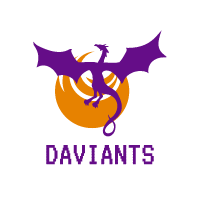



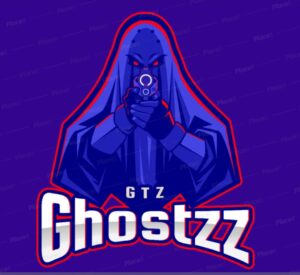







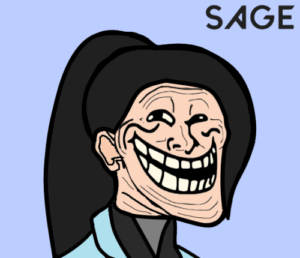

.jpeg)




-300x300.gif)

-300x300.png)




-300x300.jpg)






-300x300.png)


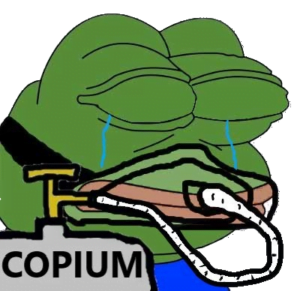

-300x300.jpg)



 DoMedia
DoMedia